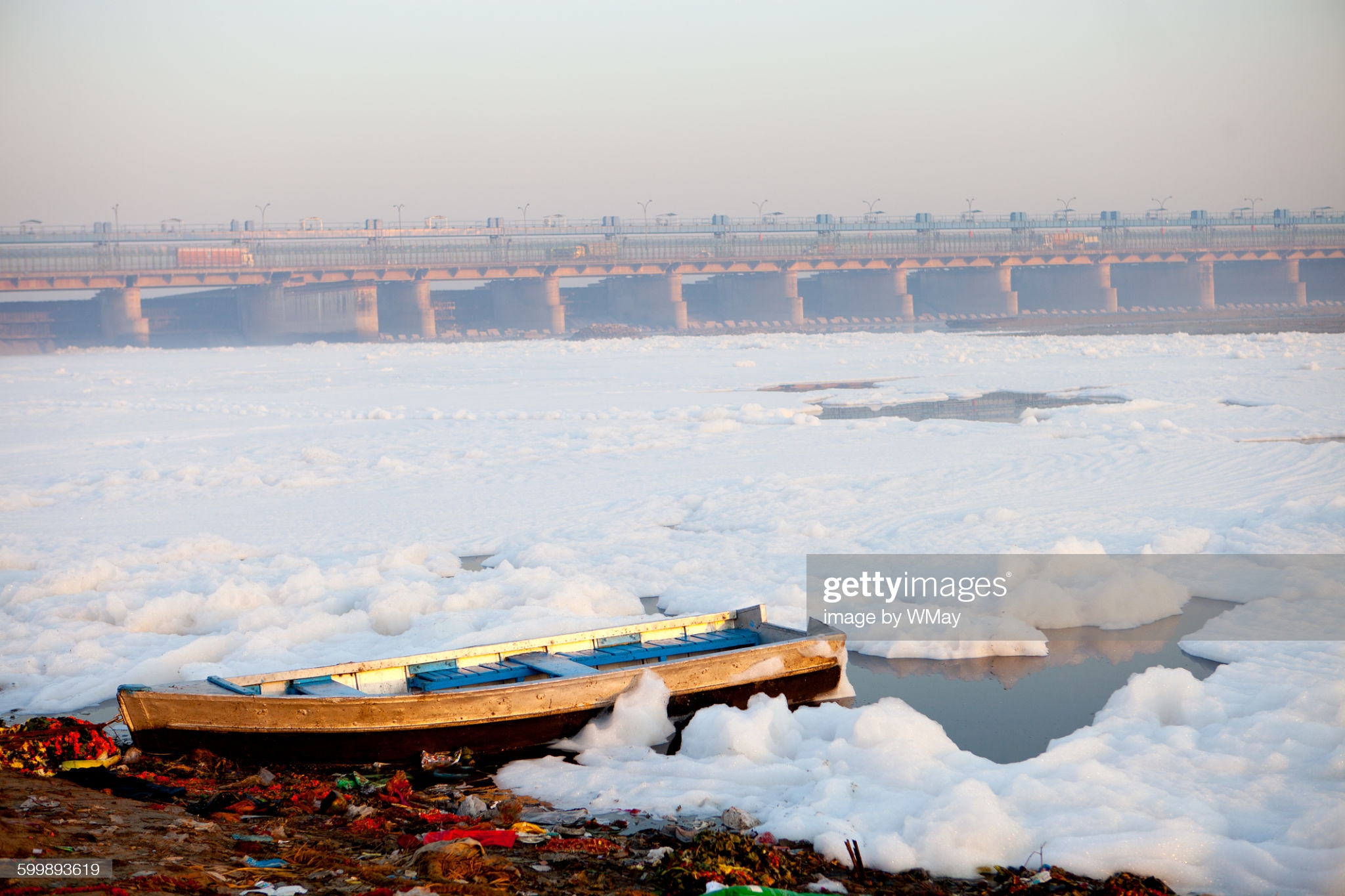
Y A M U N A , D e l h i
About 57 million people depend on Yamuna waters as it accounts for more than 70% of Delhi’s water supplies, but today it is also referred to as ‘Delhi’s dying holy river’. Long ago, the waters of Yamuna were pristine blue but today the Yamuna is considered to be one of the severely polluted rivers in the world. The Yamuna is particularly polluted downstream of New Delhi, the capital of India, which dumps about 58% of its waste into the river. The most pollution comes from Wazirabad, from where Yamuna enters Delhi. More than 800 million litres of largely untreated sewage is pumped in the Yamuna each day. Another 44 million litres of industrial effluents are also discharged daily into the river. Sewage that is treated before being released into the river accounts for only 35% of the total estimated sewage discharge. The catchment area of River Yamuna in Delhi is highly urbanized and is networked with several drains. Najafgarh and Shahdara drains are the major drains that discharge a heavy load of pollutants into the river. Rapid urbanization and population growth results in industrialization pose a major threat of heavy metal pollution for nearby water bodies. The water quality monitoring of River Yamuna has indicated a significant presence of several heavy metals in its water. According to the Central Pollution Board, the water contains a concentration of 1.1 billion fecal coliform bacteria per 100 milliliters of water. The standard for bathing is 500 coliform bacteria per 100 milliliters. According to a report submitted by the Delhi Pollution Control Committee and the Central Pollution Control Board (CPCB) to the Yamuna Pollution Control Committee, at least 90% of domestic wastewater in the city flows into the Yamuna. The wastewater mainly comes from household activities hence the presence of high content of detergent, laundry chemicals, and phosphate compounds.